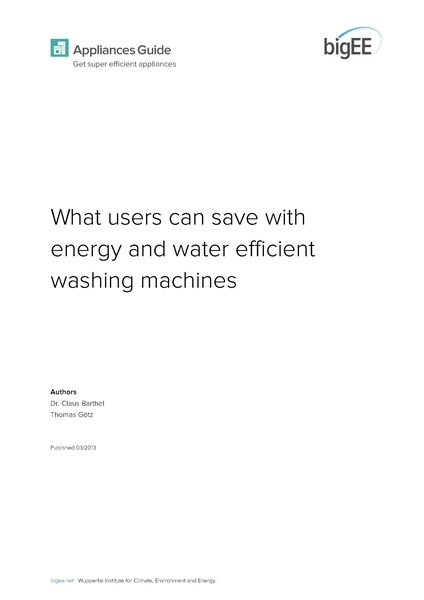Click here to register!
File:Bigee domestic washing machines user savings.pdf
 Size of this JPG preview of this PDF file: 424 × 600 pixels. Other resolution: 169 × 240 pixels. |
Original file (2,479 × 3,508 pixels, file size: 5.79 MB, MIME type: application/pdf, 23 pages)
Summary
Washing laundry is one of the most widespread tasks of housework in the world. In the past, it generally used to be hard and time-intensive mechanical work, and for many households in the world, it still is. Today, washing machines (also known as ‘clothes washers’) perform this task in many private households worldwide using water, electricity, chemical substances and process time as resources. Due to different washing habits and practices and different types of washing machines, both the consumption of resources for doing the laundry and the potential for savings vary greatly. Energy savings of 12 to 55 % and water savings of 26 to 73 % are possible with the most energy-efficient appliances available today, and even higher savings will be possible with next generation technologies.
Licensing
| File from an External Source | This file is from an external source. The copyright provisions of the original source apply to this file. Please report copyright infringements to the energypedia team so that it can delete the appropriate files. |
|---|
File history
Click on a date/time to view the file as it appeared at that time.
| Date/Time | Thumbnail | Dimensions | User | Comment | |
|---|---|---|---|---|---|
| current | 15:50, 15 December 2014 |  | 2,479 × 3,508, 23 pages (5.79 MB) | ***** (***** | *****) | Washing laundry is one of the most widespread tasks of housework in the world. In the past, it generally used to be hard and time-intensive mechanical work, and for many households in the world, it still is. Today, washing machines (also known as ‘cl... |
You cannot overwrite this file.
File usage
There are no pages that use this file.




















